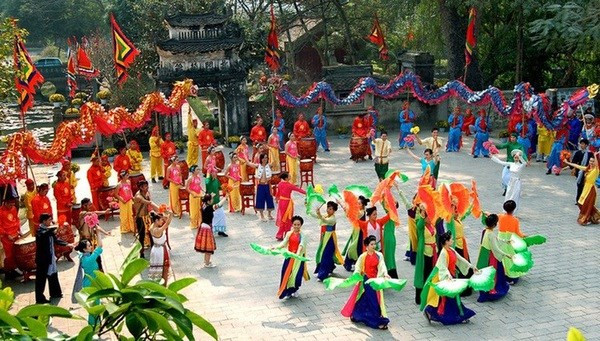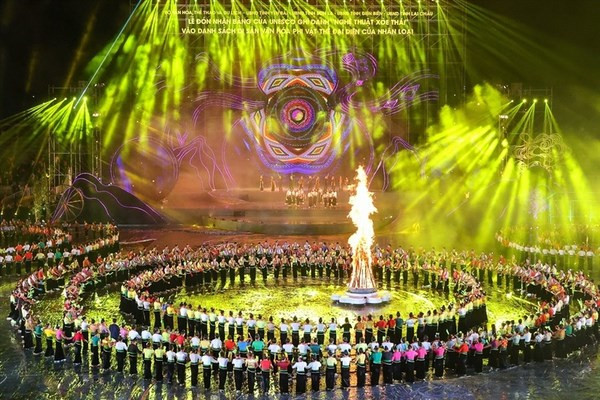
The programme covers all localities nationwide and a number of countries sharing long-standing cultural relations with Vietnam, focusing on the areas of cultural heritage, fundamental culture, performing arts, fine arts, photography and exhibitions, cinema, library, training, ethnic culture, culture for external relations, and cultural industry.
Major tasks and solutions put forth by the programme include completing the legal and policy system regarding culture; sustainably preserving and promoting national cultural values; improving the efficiency of cultural institutions; building a healthy cultural environment and enhancing the spiritual life of people.
At the same time, the programme will also concentrate on developing the contingent of artists and intellectuals, personnel training in cultural area, promoting Vietnamese cultural and art products with high values, spreading the image of Vietnam, and its people and culture to the world.

A performance of Xoe dance of Thai people, a UNESCO-recognised World Intangible Cultural Heritage. (Photo: VNA)
Specifically, the programme will restore and preserve two cultural and natural heritages recognised by UNESCO; 15 special national relic sites that are seriously degraded, while giving urgent support to the repair of about 150 national relic sites.National thematic museums and a national centre for artifact preservation will be established, while measures to step up the application of IT will also be implement to speed up digital transformation in protecting and promoting values of cultural heritages.
The Ministry of Culture, Sports and Tourism is in charge of collecting data and reporting the progress of the programme, while summarising and proposing solutions to tackle obstacles during the implementation of the programme.
Meanwhile, localities are assigned to ensuring capital and land areas for the construction of cultural works./. VNA